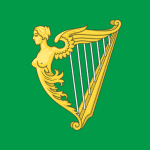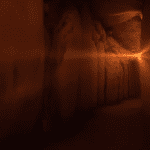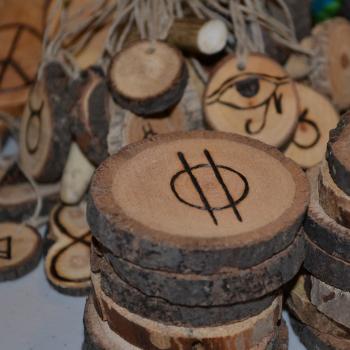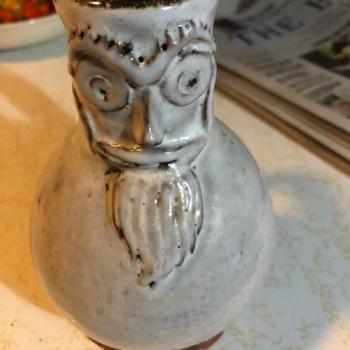If you’re new to cultural European paganism, I aim to make this one of the most influential writings you’ll read, as it will help you give structure to a soup of gods usually structured by lineage and not role.
“Theology, mythology, sacred literature, sacerdotal organization, as well as ritual are all subordinated to something more profound which unites them into a meaningful whole. This ‘something more profound’ is an ideology.” – Littleton, A New Comparative Mythology
In Our Own Magic, ADF, we specialize in pagan scholarship. If you’re familiar with Margot Adler’s Drawing down the moon, you’ll know ADF is proudly one of the first pagan organizations who concerned ourselves with Comparative Mythology, the works of Mircea Eliade, Gimbutas and J.P. Mallory as the basis for building a new paganism, which was as closely recognizable to our ancestors as could be humanly possible. This was 15 years before the word reconstructionist heathen or celtic recon was a twinkle in their daddy’s eye.
The path down which this particular line of scholarship has led us is an unexpected yet interesting one. It ends is in a set of commonalities which carry a level of profound significance across vast swaths of earth, from China to Ireland.

But the secret key to understanding any paganism in Europe, Persia, India, or other Indo-European regions lies within a hidden Ideology that is shared among them and therefore, also with their mother paganism.
We pay much attention to the work of Georges Dumézil, a comparative mythologist who basically reinvented the study, gained tenure, and built his own department as a Indo-Europeanist at the Collége de France. Nevertheless, his theories developed while he studied under French Indo-Europeanist Antoine Meillet and after being exposed to the theories of Emile Durkheim.
In short he revolutionized every study that touched the Indo-Europeans: linguistics and philology, mythology, archeology, anthropology, sociology, psychology, and now european polytheism. The evidence in this article is his evidence, and these ideas are his ideas.
There is a Bigger Picture Behind Celtic, Heathen, Greek, Roman, Slavic, Persian, and Vedic Paganism
TLDR: Nearly all the paganisms of Europe, India, and Persia follow a specific pattern where their social structure is projected into the sacred. Not only that, the similarities between epithets of gods, events that occur in divine wars, and the joining of tribes of gods. Even the dismemberment of Ymir is shared in Heathenry and Hinduism. Enough time and considerations has been given by thousands of scholars on the matter to give this theory credence.
So before you discount it, consider it.
The pattern that emerges when we study all aspects of these cultures is a veneration of the number three and triple things. When we analyse the triplicities we find, the results are the same, we see the same pattern time and time again.
Understand that the goal here is not to prove these versions of paganism are the same, or fit the same mold. On the contrary, they are divergent from the thing we are seeking, but we use elements of cultures that practiced these kinds of paganism to illuminate veins of concepts that these paganism stemmed from.
Durkheim believes that socially important notions and thoughts will work their way into mythology by whatever mechanism. Here, wars and misdeeds are projected onto the sacred as much as the moral outlook of a culture that carries those myths forward.
The Hidden Ideology: Tripartite Ideologie
What makes the Indo-Europeans different is their ideology. Dumezil’s use of the word ‘function’ to describe the social classes is reflected in this common ideology. The ideology was that Sovereignty, Force, and Nourishment were functions of one another and interdependent concepts, neither existing without the other in a mathematical sense (5).
Examples of Tripartition in Indian Paganism
Society was neatly ordered into the First Function of Priests, Second Function of Warriors, and Third Function of Cultivators and Herdsmen as Arya, the ‘people’. Each part of society was in league with their divine counterparts, the gods, giving their own contribution toward a healthy cosmos (50).
The myths of the gods reflect this as well. Varuna and Mitra reign as the sovereign gods. In this first function of Sovereignty, there are two divisions. The first is Mitra who is the god of oaths and contracts, an aspect of the Brahman caste concerned with law. The second is Varuna who is the magico-religious reflection of the same caste(8).
Mitra and Varuna operate the cosmic scale of supernatural labor (7) along with their assistants, or lesser deities which include Bhaga and Aryaman(8). Aryaman is cognate to the German Irmin, Norse Iormunr(Othinn) Irish Eremon, Gaulish Ariomannus, and possibly related to the Welsh Arianrhod.
The Second Function of Force in Indian society is represented in the heavens by ‘young virile warlike gods’ (8) such as Maruts, the storm deities in Hinduism, and Indra who acts as a striker god. Striker gods often have a special magical weapon and sometimes even bear the name of striker. The striker god is usually pivotal in the winning of a divine war (8) and releasing the waters.
The Third Functional gods of Nourishment are Asvins or other nature based gods like the goddess Sarasvati (9). This level’s main goal is to promote the fertility of plants and animals, and to ensure the harvests are abundant.
We know this system belongs to the Indo-European language-culture complex because it doesn’t just appear in India alone, as Dumezil demonstrates this same picture in the myths and social structure of most of the ancient IE speaking communities. Our best evidence outside India comes from Italic, Germanic, Celtic, and Indo-Iranian peoples (9).
Examples Indo-Iranian Paganism
The treaty of the fourteenth century BCE between the Mitanni King, Matiwaza, and his Hittite conquerors records the oldest datable Indo-iranian examples of tripartition (9). Matiwaza belonged to either a Indo-Iranian or Indic aristocracy that had imposed its culture on the local Hurrians in Northern Syria. The gods called to witness the signing of the treaty were Mitra–Varuna and Indara, and his local version of the Asvisins, the Nasatyas. Here in Matiwaza treaty, magico-judicial, warrior, and farming gods are all called (9).
The Hurrians and Mittani flourished in Anatolia. In Indic IE cultures, arya meant people, and the ruling class of the Mittani are called marya (10). Haruvat and Amertat are the Iranian cognates to the Asvins (46).
When Herodotus relays the Scythian origin myth, the three functions are represented when, appearing from the sky, three objects of red hot gold, a cup, an axe, and a plough fall and are discovered by the ‘youngest son of Targitaos, the primeval being. Targitaos and his sons are almost regarded as men by Herodotus, on the level of Hercules (10). The two older brothers of Kolaxais become the two lower classes of producers and warriors, while the recoverer of the talismans becomes the sovereign class (10).
In Zoroastrianism, which was about as monotheist and as polytheist rooted as modern catholicism, the First Function is covered by the Immortals under Ahura Mazda(10). These Immortals include Asa (Order) and Vohu Manah(Good Thought). Another Immortal, Xsathra(Physical Force) is clearly the descendant to Indra’s original Iranian cognate (11). And finally, the Asvins are parallelled in the Pair Haurvatat(Health) and Ameretat(Immortality), as does Sarasvati’s cognate Armaiti(Pious Thought). Clearly the same structure emerges.
While the divine twins are mirrored foremost in the east, you’ll see later that in the west, an entire separate tribe of gods represent the divine twins. If they are present in the west, they seem more diminished the further west you go. In Ireland, one of Macha’s incarnations she marries a farmer and gives birth to twins, Likewise, Airmed and Miach as twin represent plant life, spring, transformation, and healing; especially through herbs. Herbs are product of the Third Function land laborers and gatherers. Instead of the twins, you might find brother and sister pairs, or even whole tribes like the Vanir and Fir Bolg joining the gods as the Natural gods and gods of cultivation harvest and agriculture. Contrary to what I’ve just said, sometimes the twins are very prominent, like Romulus and Remus.
This clean function tripartition tends to break down in different societies at different times when the region changes or there’s a cultural invasion. Indra becomes Shiva, Mithra, as opposed to Mitra, absorbs the 2nd function, and viking warriors push the plow more often than the pike. So two of the functions tend to collapse on one another socially, while tripartition remains ideologically. Mitra as a juridical god, shares almost nothing in common with the Iranian Mithra as warrior(11).
Examples from Roman Paganism
In Rome’s historicized myths, the first three kings of Rome, Romulus, Numa, and Tullus Hostilius are representative of First and Second Function roles. Romulus is like Varuna, though later in Dumezil’s later phases pegged him as a cultivator that became a first functional king, Numa like Mitra, and Tullus Hostilius like Indra(11). Georges Dumezil feels the Sabines are representative of third functional figures. The Sabine war was seen as a war between the cultivators on one side and the magico-warrior group on the other. In this war the third functional classes of society lost and were brought into the social system (12).
Additionally in the “pre-capitaline or archaic triad”, consisting of Jupiter, Mars and Quirinus, represent gods of sovereignty, force, and nourishment, in part. Ops is combined with Quirinius, and Dius Fidius with Jupiter to yield a Mitra type figure (12).
Jupiter is Rome’s comparative parallel with Othinn, with some 2nd function features added to his First Function identity. He embodies both magical and judicial roles in his pantheon. Mars is parallel the roman Lugh/Indra/Thorr figure. And Quirinus is equated with the dispenser of Vitality, like Irons and Aengus mac Oc.
It was Benveniste who corroborated Dumezil on Iranian tripartition, but not only that, he expanded it to include Scythians and Indic (154). Later he demonstrated that Umbrian tripartition matched that of Rome (155). He also pointed out that in Roman religion the pig is sacred to Tellus(3rd Function), the bull to Mars(2nd Function), and the sheep to Jupiter(First Function).
Examples from Germanic Pagansim
Odin and Tyr usually represent the magico-juridical First Function of Sovereignty, and Thor is the warrior Striker like Indra is, and thus he corresponds to gods like Mars, Lugh and Indra. The Twin gods Freyr and Njordr are third functional figures of the Vanir, corresponding to Ops and Quirinius and the Asvins. Like the Sabines, the Vanir are defeated and brought into society as the third function. Generally a third function female figure is prominent, like Anahita and Sarasvati, we see Freya emerging into this role (12).
The essence of these themes is the retelling of the grand story of the Celestials (Gods of Human Traits) overcoming the Terrestrials (Gods of Nature). These myths of wars between gods of cultivators against non-cultivators, speaks to the conflicts between semi nomadic pastoral gathering herdsmen, dominating agrarian societies, either by trade, education and skill or by force. This is, in a way, a sacred myth making of the Iron age spilling over into areas still in the Neolithic Age.
Germanic society didn’t reflect tripartition too much by the late viking era. There were distinct classes of Warriors, however, separate from the cultivators and cultivator warriors. These were young warriors surrounding the King called Mannerbund (Russell 117).
Othinn as the magico-religious god of chiefs, chief of gods. His ferociously fierce magics were augmented and balanced by the agency of a second deity, *Tiwas, Tyr, Ullr, or Mithothyn.
Heimdallr’s children reflect the tripartition seen in India. Thrall(Slave), Karl(peasant) and Jarl(noble) are seen in the same light as Sudra, Vaisya, and Ksatrya. The son of Jarl, and therefore Heimdallr’s grandson, Konr-ungr, fulfills the magical half of the First Function with Jarl. Here tripartition is preserved, though diminished to one tale in the Rigsthula(133).
George Dumezil theorizes the priestly class merged with the warrior class (157 note 5).
Examples from Celtic Paganism
Of the Three Machas, there were actually four, the wife of Nemed, Macha the prophetess is a first functional incarnation of magico-religious significance; the Macha Queen who battled against 4 other warriors for high kingship is clearly associated with the Second Function of force, while Macha, the Fairy woman, fairies sometimes seen as spirits of nature or who dwell within the earth, marries a farmer. She bears him two twins that she gives birth to after she wins a race again the king’s horses (Littleton 13). Clearly this incarnation is associated with the nourishment role of the Third function, with a set of twins as well.
The three techniques of the human sacrifice of Hanging, Burning or Stabbing, and Drowning relate to the first, second and third functions respectively (14).
Just like there was a distinct class of warriors in germanic culture, however, the Fianna were as distinct from other social strata. These were young warriors who would also surround the King in times of need when the normal military and fighting men weren’t a solution (17). The Fianna were so distinct, they lived in the woods separate from society, close to how you’d picture Little John and Robin Hood. I do not know if they had a treehouse village, though that would be amazing. Even still, the Germanic and Celtic divisions between the functions weren’t as defined as the line between Kshatriya and Vaisya (17).
We can easily make comparisons between the Vanir-Aesir war, with the Mahabharata and the First Battle of Maige Tuired, between the Tuatha De and the Fir Bolg. Dumezil presents the four treasures, places the Un-Dry cauldron of Dagda as a Third functional talisman of nourishment. The Sword and Spear are 2nd functional talismans and the coronation Stone of the First Function of sovereignty (72).
Likewise, it is my own assessment that the three talismans of Dagda reflect the trifunctionality as the harp was of the intelligentsia and sovereignty, the club of force one which he obtained, and his cauldron which provides nourishment.
Another obscure example is that of Ailill, Queen Medb’s husband, who had to match her bravery, wealth, and had already matched her as a noble and thus fit to be a King (72).
Examples from Greek Paganism
The “Heavenly Twins” or Dioscuri correspond certainly to the Asvins and the Third function. The mediterranean religions are heavily influenced by non-IE speaking peoples. You’ll see the other functions potentially, but in mutated ways. One example of this is Zeus uses Magic, Might, and Universal Order in the epics. So he takes on the roles of Varuna, Indra, and Mitra(14).
In the judgement of Paris, the Trojan prince chooses between Hera, Athena, or Aphrodite. Respectively gods of order, gods of war and gods of love represent the First, Second and Third functions. This is further reflected in the gifts each goddess offers Paris. Hera offers rulership, Athena offers skills in war, and Aphrodite offers the sensuality of earthly endowments (14). What assures Troy’s downfall is that he refuses and alienates both the first two functions, one of which is needed for victory (15).
Two other sources, Plato’s Republic and a conversation between Croesus and Solon, provide more examples. In the conversation, Croesus asks Solon to name the happiest man he’d ever met, thinking he’d be named. Solon named a series of folks referencing each of them as having qualities from the three functions. When Croesus died, it was noted that he died neither rich, gloried, or pious, just like the three circumstances Solon discusses (15).
Criticisms
Criticisms of the Tripartite theory often include naturists and universalists. The naturists argue for the commonalities being a mere result of commonalities in nature (2). The latter, the universalists, dismiss Trifunctionality by saying that these motifs are common to other religions.
Littleton says, “Even if one totally rejects Dumezil’s specific interpretations of the principal myths and divinities involved, he must indeed take cognizance of the fundamental assumptions upon which these interpretations are based.” (3)
Conclusion
What analysing these patterns has to offer is much more than noticing a correlation between social structure and the structure of the divine. Rather, that these patterns are not just borrowed, shared, and copied is what we seek to illuminate, rather they are systemic and emergent.
They are important to the way followers of these religions should view the world, the gods, their tribes, and the underlying ideology that would be recognizable to our ancestors.
Wherever the Indo-European languages were carried, this ideology was carried. When everything else changed, this didn’t. That means it is the single most important underlying ideology. Durkheim tells us that what was important to the PIE(proto-indo-european) speaking peoples entered their sacred landscapes of myth. Littleton tells us it was resistant to change, centuries after society no longer mirrored the tripartite model. The system even passed from myth to historic epic without mutilation (157).
Our next task is to look at the commonalities in our worldview. But that is a future post.

















